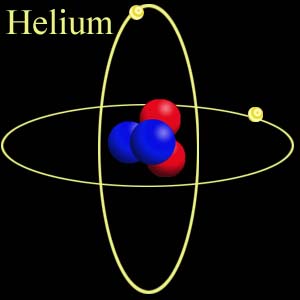
It holds over 40 percent of the helium used annually in the United States. Bureau of Land Management, is near Amarillo, Texas. The Federal Helium Reserve, operated by the U.S.(Image credit: bobyramone, Andrei Marincas Shutterstock) Who knew? The helium atom has one proton and two electrons. The bill prevented the federal government from undercutting private producers, thus encouraging more sources of helium production to go online. However, Congress acted, passing the Helium Stewardship Act of 2013, which slowed the sale of federal helium and allowed the BLM to auction the gas at higher prices. Bureau of Land Management to sell off federal reserves of helium on the cheap, discouraging the development of new helium sources. In 2013, fears of a global helium shortage loomed when a 1996 law went into effect requiring the U.S. The United States produces about 75 percent of the world's helium, with Qatar coming in second. Liquid helium also cools the magnets in the Large Hadron Collider, the world's largest particle accelerator, down to -456.34 degrees Fahrenheit (-271.3 degrees Celsius). Only about 3 percent of the helium used in the United States each year is consumed by scientific labs. According to the American Physical Society, most helium in the United States is used in industry and in cooling the magnets in magnetic resonance imaging (MRI) machines. Today, helium is frequently found in laboratories that require extra-cold temperatures for experiments, because this inert gas can be chilled to temperatures near absolute zero. Helium blimps weren't used much in World War I because of the cost of production, according to the ACS, but they became much more common in World War II, by which time the cost of helium had dropped. But during World War I, military leaders and scientists began to push for helium's use in blimps.

He had the gas from the well collected and discovered that 12 percent was made of an "inert residue." Further experiments over the next two years at the University of Kansas revealed helium gas among this residue.Īt first, no one thought the discovery of helium in natural gas had much application. Most of the townspeople were disappointed, but Kansas state geologist Erasmus Haworth became curious. At a celebration of a new gas well in Dexter, Kansas, the mayor attempted to ignite the escaping gases, only to find that the flames went out. The initial hint that helium was lurking in natural gas occurred in 1903, according to the American Chemical Society (ACS). Instead, the helium used in science and industry today comes from natural gas, where this element was first discovered in 1905. As such, it's not economical to extract the gas from air. Credit for this discovery goes to Swedish chemists Per Teodor Cleve and Nils Abraham Langer.Įarth's atmosphere is only about 5 parts per million, or 0.0005 percent, helium.

It wasn't until 1895, however, that helium's presence on Earth was confirmed and that scientist discovered its atomic weight. According to the Royal Society of Chemistry, Italian physicist Luigi Palmieri observed a wavelength of 587.49 nanometers in gases emitted from Mount Vesuvius in 1882, the first detection of helium on Earth.

The discovery of helium on Earth took longer. The scientists dubbed this mystery element "helium," after Helios, the Greek god of the sun.

Working with chemist Edward Frankland, Lockyer concluded that the line was the fingerprint of an unknown element. Two months later, though, English astronomer Sir Norman Lockyer set up his own spectroscope in London and saw that same yellow line. Janssen didn't identify the source of this wavelength.


 0 kommentar(er)
0 kommentar(er)
